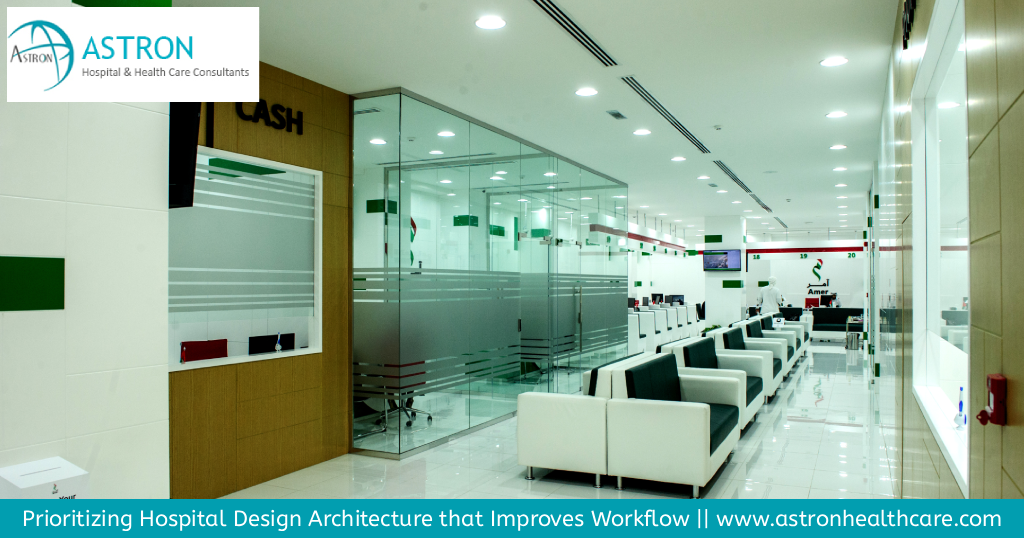
The physical environment or the structure of the hospital is not simple walls and space but directly correlates with the quality of the provided care. The flow of medical personnel, the convenience, and comfort of the patients, the way the emergencies are handled can be affected by every part of the layout. It is this reason that has led to the increased interest in the hospital design architecture that can enable an improved workflow of work and operations.
The Link between Design and Efficiency
Time is very important in any hospital. It can be the delivery of medication to a patient or it can be the transfer of someone into another department, delays, however, can be detrimental. A poorly designed space can create congestion, confusion or wastage of movement. An architecture that enhances hospital workflow emphasizes much on the manner of people movement under the space be it patients, employees, and even machines.
As an example, the design of patient rooms in regards to nursing stations is important. A scenario where nurses are required to walk long distances severally contributes to their exhaustion and also slows down the delivery of care. Such inefficiencies can be minimized with more thoughtful hospital design architecture for rooms in which one is likely to spend most time being placed in proximity to workstations. This makes the morale of the staff higher and patient attention more solid.
Key Elements That Support Workflow
Modern hospital design architecture now looks closely at how to optimize internal traffic and reduce unnecessary movement. Some features that help include:
- Clear zoning: Separating areas for public access, clinical work, and staff operations ensures fewer interruptions and confusion.
- Efficient circulation routes: Direct and obstacle-free hallways help staff and patients move quickly between departments.
- Decentralized nursing stations: Smaller work areas closer to patient rooms allow for quicker response times.
- Standardized room design: Keeping room layouts similar across departments helps staff work more efficiently across different areas.
Each of these design choices may seem small on their own, but together they shape how well the hospital functions on a daily basis.
Technology and Workflow Integration
Technology has also altered the hospital functioning. Digital documentation, as well as intelligent devices, has brought a lot of tasks to rely on tech availability. Due to this, the architecture of all the hospitals needs to prepare to integrate infrastructure. This encompasses the deployment of the power outlets, data ports and equipment docking stations in logical positions.
Effective tech-friendly places are clutter-free, and work processes are not disrupted. Lack of improvisation allowed due to bad access or layout gives the staff more time to concentrate on the main issues that the staff is there to handle.
Emergency Care and Rapid Response
Speed and clarity are of the essence in cases of emergencies. The hospital design architecture that has an emphasis on how to frame workflow results in the emergency department being designed to reach imaging, surgery, and ICU in the shortest time. Clear signs, adequate lighting, and open floor designing also alleviate confusion as they contribute to stressful moments.
Also, emergency supplies storage areas can be put close to areas of high need which may save crucial time. The patients may not see these design elements immediately, but they are instrumental to staff performance and patient outcomes..
Adapting to Evolving Needs
Hospitals cannot be the same static building all its period. They have to change with the increasing number of patients, new practices of medicine, and development of technology. This can be done with the assistance of a flexible hospital design architecture that would include modular rooms, adjustable rooms, and wings that can be enlarged. This assists the hospitals to maintain high performance even as the service they offer increases or changes.
With the design to facilitate easily upgradeable and reconfigure faster, the hospitals do not need to make big restorations periodically to keep up with the trends.
Conclusion
Hospital design architecture is not just about aesthetics or space utilization. Keeping workflow in mind, the design of a hospital is a robust tool to improve service quality, staff efficiency, and patient satisfaction. It is more likely that the hospital is going to witness increasing demands, focusing on design elements that streamline movement and reduce delays is more important than ever.
Thus, a well-planned layout should not be perceived as convenience alone—it’s a key contributor to how well a hospital performs. Hence, prioritizing such thoughtful architecture is a step toward better healthcare delivery.
